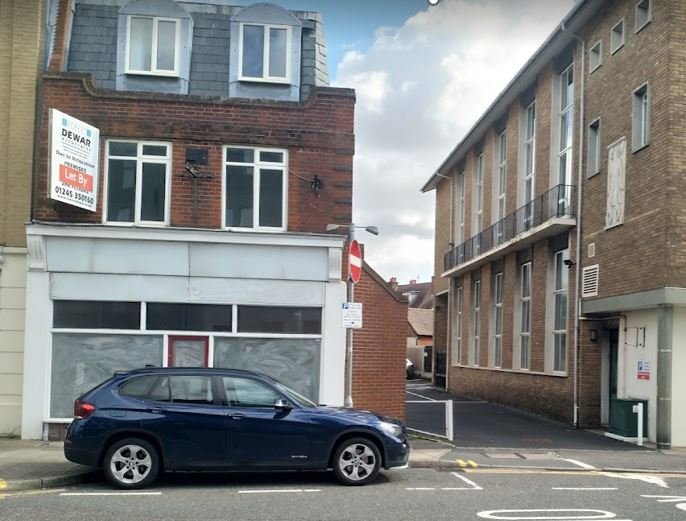Class ZA – Demolition of buildings & construction of new flats or a house
Development Opportunities under Class ZA
Class ZA of the General Permitted Development Order (GPDO) offers property owners and developers a transformative opportunity: the ability to demolish certain buildings and replace them with new residential units without requiring full planning permission.
This powerful provision, introduced to streamline urban regeneration, focuses on promoting housing development on previously developed land.
Read on to find out how Class ZA can be leveraged to unlock value from underutilised properties.
What is Class ZA?
Under Class ZA, property owners can demolish a detached commercial or light industrial building, such as offices, research facilities, or industrial sites, and replace it with a purpose-built block of flats or a single dwellinghouse.
However, strict conditions apply:
The original building must have existed before March 2020.
It must be vacant for at least six months prior to applying for prior approval.
The site must not exceed a 1,000 m² footprint.
The new structure can include some additional features and may have the same number of storeys as the original building, plus two extra storeys in the airspace, provided it does not exceed 7m in additional height or a total of 18m overall.
Moreover, certain locations, such as conservation areas or sites near aerodromes, are excluded from these rights.
Class ZA Challenges and Constraints
While Class ZA offers substantial benefits, certain restrictions apply:
Class ZA Location Limits: Class ZA cannot be used in:
Conservation areas or Article 2(3) land.
Sites of Special Scientific Interest (SSSIs).
Near military explosive areas or aerodromes (within 3km).
Listed buildings or scheduled monuments.
Class ZA Prior Approval Considerations: Local authorities will evaluate various factors during the prior approval process, including:
Transport and highways impact.
Flood risk and contamination.
External appearance and architectural design.
Natural light provision in all habitable rooms.
Impact on heritage, archaeology, and protected views.
Amenity considerations, such as overlooking, privacy, and noise impacts.
The Development Potential under Class ZA
Class ZA represents an excellent opportunity to repurpose outdated or vacant buildings into much-needed housing.
Key advantages include:
Cost Savings: Avoiding full planning permission reduces associated costs.
Streamlined Process: Faster approval times through prior approval rather than full planning applications.
Sustainability: Redeveloping previously used sites aligns with sustainability goals by minimizing urban sprawl.
This provision is particularly beneficial in urban settings where land is at a premium and demand for housing is high.
-
Class ZA - Demolition of buildings and construction of new dwellinghouses in their place
Permitted Development
ZA.—(1) Development consisting of works for the demolition of one or other of—
(a) any building comprising a single purpose-built detached block of flats, and
(b) any other single detached building, comprising premises established—
(i) for office use falling within Class B1(a) of the Schedule to the 1987 Order,
(ii) for research and development falling within Class B1(b) of the Schedule to the 1987 Order, or
(iii) for an industrial process falling within Class B1(c) of the Schedule to the 1987 Order,
or for any combination of them, existing on 12 March 2020, together with its replacement by a single building covered by sub-paragraph (2), involving operations listed in sub-paragraph (3).(2) The building in question is to comprise one or other of—
(a) a purpose-built detached block of flats, or
(b) a purpose-built detached dwellinghouse.(3) The operations in question are—
(a) operations reasonably necessary for the demolition and construction, which may include the installation of a basement or cellar in the new building, whether or not there is one in the old building;
(b) works for the removal of plant servicing the old building;
(c) works for the disconnection of services from the old building;
(d) works for the removal of any means of access to and egress from the old building;
(e) works for the removal of storage and waste from the old building;
(f) works for the installation of plant to service the new building;
(g) works for the installation of services to be connected to the new building;
(h) works to enable access to and egress from the new building, including means of escape from fire;
(i) works for the construction, within the new building, of storage, waste or other ancillary facilities to support the new building;
(j) the use of scaffolding and other temporary structures to support the operations listed in paragraphs (a) to (i) over a period—
(i) starting with their installation no earlier than one month before the beginning of those operations, and
(ii) ending with their removal no later than one month after the completion of those operations.Development not permitted
ZA1. Development is not permitted by Class ZA—
(a) if land covered by, or within the curtilage of, the old building—
(i) is occupied in any part under an agricultural tenancy, unless the express consent of both the landlord and the tenant has been obtained;
(ii) is or forms part of article 2(3) land;
(iii) is or forms part of a site of special scientific interest;
(iv) is or forms part of a listed building or land within its curtilage;
(v) is or forms part of a scheduled monument or land within its curtilage;
(vi) is or forms part of a safety hazard area;
(vii) is or forms part of a military explosives storage area; or
(viii) is within 3 kilometres of the perimeter of an aerodrome;
(b) if the old building was constructed after 31 December 1989;
(c) if the footprint of the old building exceeds 1,000 square metres;
(d) if the height of the highest part of the roof of the old building above ground level (not including plant, radio masts and antennae) is greater than 18 metres at any point;
(e) unless the old building has been vacant for a period of at least 6 months immediately prior to the date of the application for prior approval;
(f) if the old building has been rendered unsafe or otherwise uninhabitable by the action or inaction of any person having an interest in the land on which the old building stands and it is practicable to secure safety or health by works of repair or works for affording temporary support (and for this purpose keeping the old building vacant does not of itself count as action or inaction);
(g) if the demolition is “relevant demolition” for the purposes of section 196D of the Act (demolition of an unlisted etc. building in a conservation area);
(h) if any of the footprint of the new building falls outside the footprint of the old building;
(i) if any part of the exterior wall of the new building nearest to a highway is nearer to the highway than the part nearest the highway of the exterior wall nearest the highway of the old building;
(j) if the height (not including plant, radio masts and antennae) of the new building would at any point exceed the lower of—
(i) 7 metres above the height (not including plant) of the old building; or
(ii) 18 metres, above ground level;
(k) if the new building has more than X + 2 storeys, where “X” is the number of storeys in the old building;
(l) if the new building has more storeys than the old building and the floor-to-ceiling height of any additional storey in the new building, measured internally, would at any point be greater than the lower of—
(i) the floor-to-ceiling height, measured internally, of any storey in the old building; or
(ii) 3 metres; or
(m) if the height of any plant on the roof of the new building as measured from the lowest surface of that roof would be greater than the height of any existing plant as measured from the lowest surface of the existing roof on the principal part of the old building.Conditions
ZA.2.—(1) Development under Class ZA is permitted subject to the following conditions.
Recent Planning Successes
How We Can Help with Your Class ZA Project
While Class ZA simplifies the planning process, obtaining prior approval involves navigating a complex set of requirements and considerations. This is where our expertise as planning consultants comes in:
Feasibility Studies: We assess whether your site qualifies for Class ZA development and identify potential constraints, such as environmental risks or heritage considerations.
Prior Approval Application: We prepare and submit the necessary documents to the local planning authority, including architectural drawings, environmental assessments, and impact mitigation plans.
Contact us to explore how we can help you maximise the potential of your property under Class ZA.






























